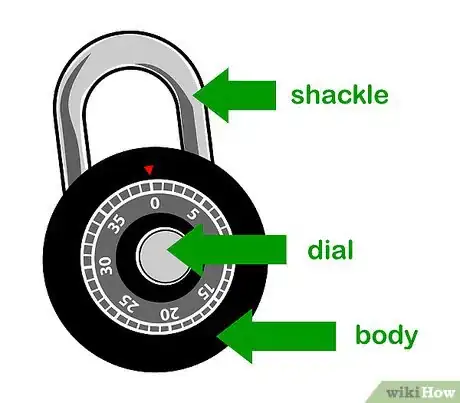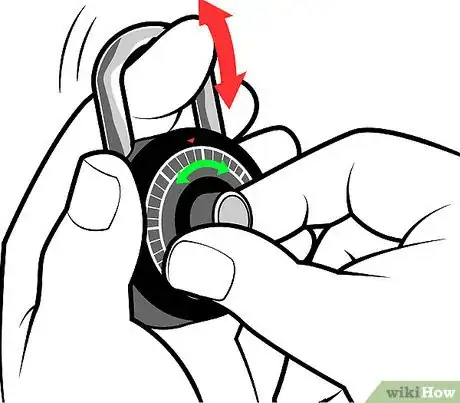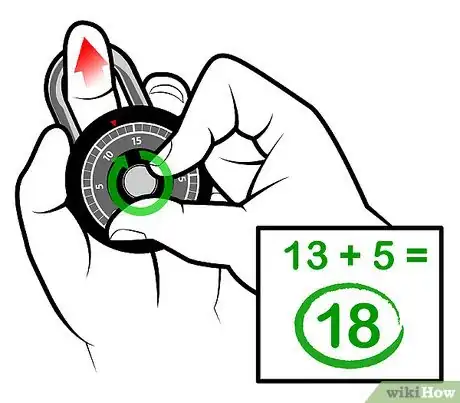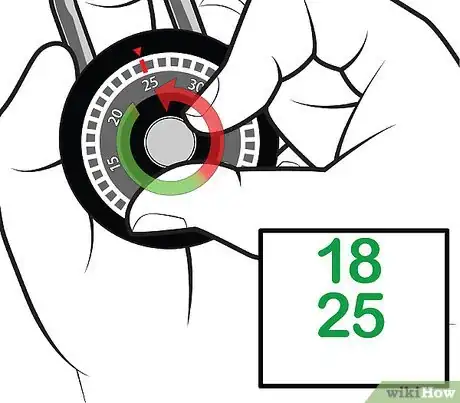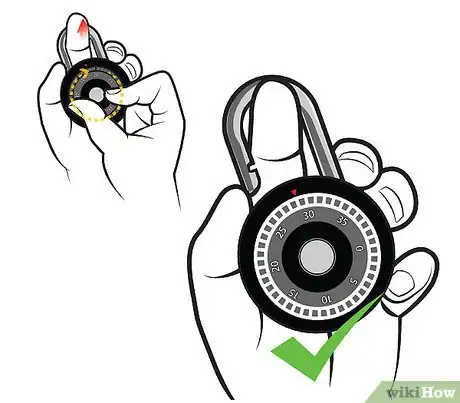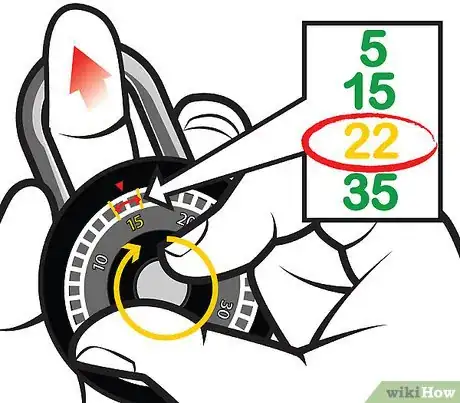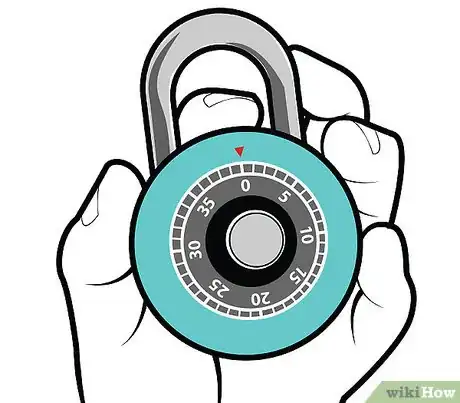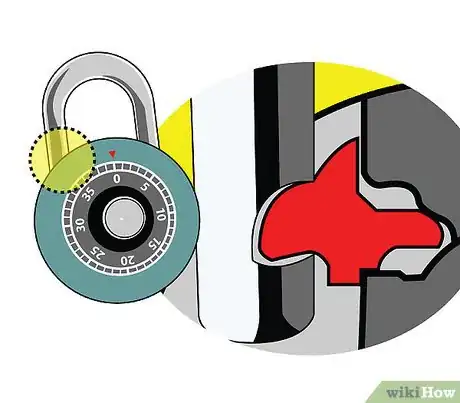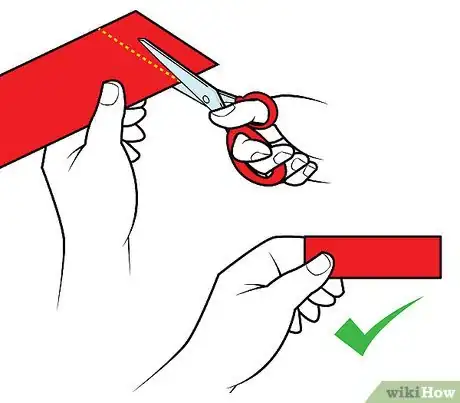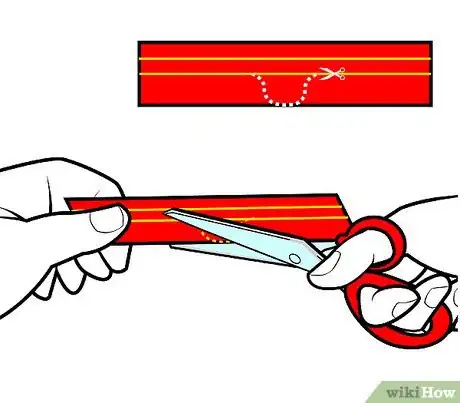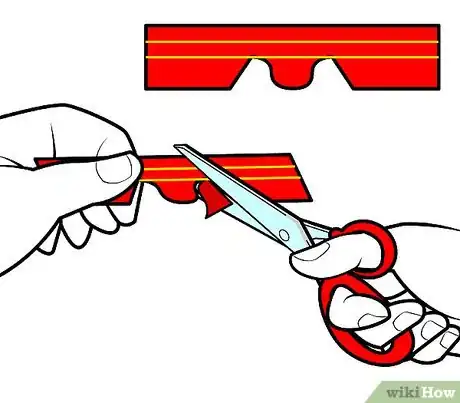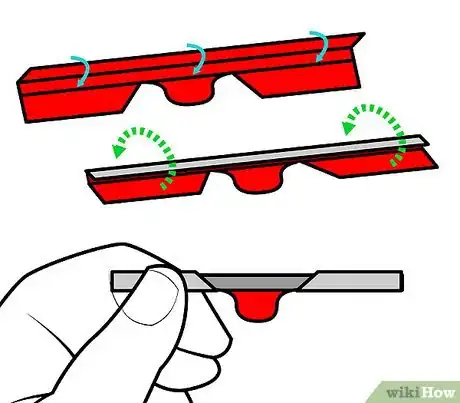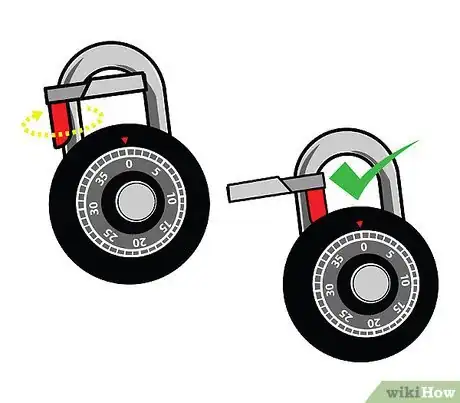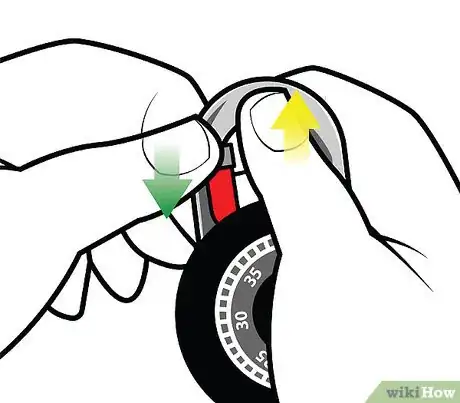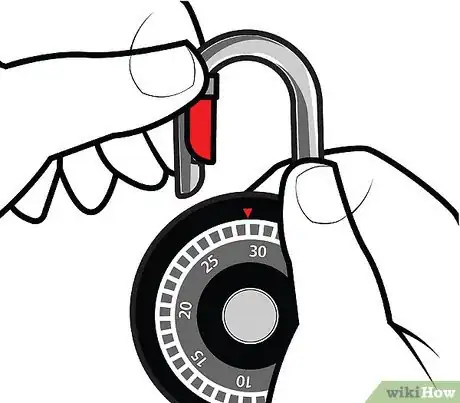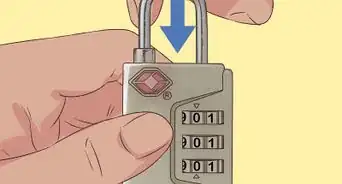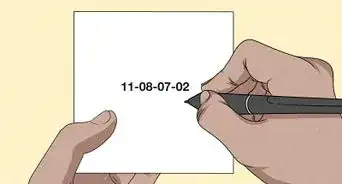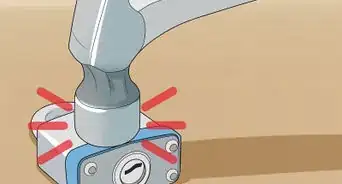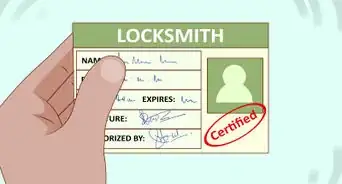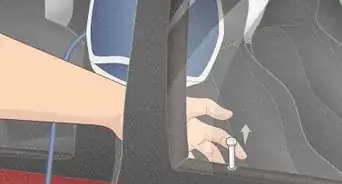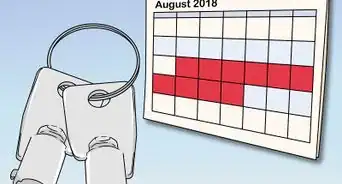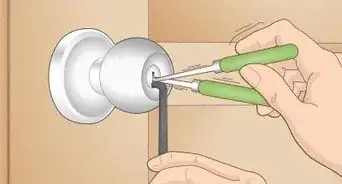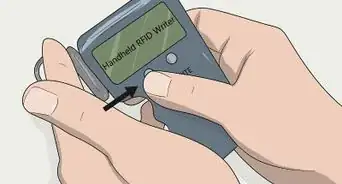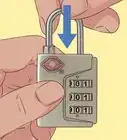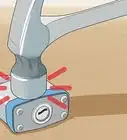wikiHow is a “wiki,” similar to Wikipedia, which means that many of our articles are co-written by multiple authors. To create this article, 20 people, some anonymous, worked to edit and improve it over time.
This article has been viewed 1,962,877 times.
Learn more...
Whoops! You’re totally blanking on your combination lock combo—but how are you supposed to get into your locker without busting out the bolt cutters? You’ve come to the right article. We’ve put together an easy, step-by-step guide to help you crack the code on your own. Still not having luck? Don’t give up just yet. We’ve also included a simple tutorial on how to open your lock with a homemade shim. If you’re still having some trouble, scroll to section 3 for a handy walkthrough on how to get your combo from the manufacturer. With any luck, you’ll have your lock opened in no time!
Steps
Cracking the Code
-
1Familiarize yourself with the lock. A lock has three main components. The shackle is the U-shaped piece which attaches it to an object. The dial is the portion with numbers that turns. The body is the rest of the lock. If you hold the lock with the shackle on top and the dial facing you, typically the locking mechanism is on the left side of the shackle.
-
2Practice pressure. To find a lock combination you will need to pull up gently on the shackle. Too much pressure will make it impossible to turn the dial. Too little and the dial will spin freely. You should exert gentle pressure. This may take some practice.Advertisement
-
3Find the first number. Pull up gently on the shackle and hold it in place. Turn the dial clockwise listening carefully until you hear the lock click.
- Start with a good deal of pressure and gently let up as you spin it around, until you meet resistance in only one place.
- If the dial catches every few numbers, you are pulling too hard. If it never catches at all, you are not pulling enough. It should catch in only one place, making a click.
- If the click happens when the dial is between two numbers, round up to the higher number.
- Add 5 to that number and write it down. This is the first number in the combination.[1]
-
4Set the first number of the combination as your starting point. It may be helpful to spin the dial a few times before doing this to reset the lock.
-
5Turn the dial counterclockwise to find the second number. Maintaining gentle pressure on the shackle, turn the dial slowly. You should go all the way around the mechanism once before reaching the second number.
- The lock will bump and catch as you turn.
- Eventually the lock hit a point where it will be very difficult to turn. This stopping point is the second number. Note it on the same piece of paper.[2]
-
6Try combinations. One method of finding the third number is to simply test every possible combination. Set your first two numbers as if you were ready to unlock. Then turn the dial clockwise very slowly, testing each possible combination.
- At this point there should be only forty possible combinations.
- You do not have to reset the first two numbers for each combination. Simply turn one number then tug. Repeat the process until the lock opens.
-
7Test for the third number. A different method for finding the third number is to test the catch. Spin the dial clockwise a few times to reset the lock and set it at 0. Apply upwards pressure on the shackle and turn the dial clockwise.
- The lock will catch several times, allowing for slight movement back and forth between two numbers.
- Write down the number in the middle. For instance, if the lock catches between 33 and 35, write down 34 on a separate piece of paper. This is not necessarily the final number.
- The lock will also catch partway between numbers. For example, the range might be between 27.5 and 29.5. If the middle number is not a whole number, such as 28.5, do not write it down. Lock combinations are always whole numbers.
- Proceed all the way around the dial, writing down all the whole numbers where it catches. You should have four or five numbers written down.
- Most of the numbers will fit a pattern, for instance all ending in 5. The one number that does not fit the pattern is the final number in your combination.[3] [4]
Creating a Shim
-
1Consider your lock. Recently made locks are designed to be shim-proof by the manufacturers, although in some cases it is still possible to pick them. This method will work better on older locks.
-
2Identify where the locking mechanism is. In order to use a shim properly you need to be working with the place where the shackle locks, as working on the hinge will not accomplish anything.
- Usually the locking mechanism is on the left side if you are looking at the lock with the shackle on top and the dial facing you.
-
3Cut an aluminum can. You can create a shim for yourself by cutting up a soda can.[5] Use scissors to cut off the top of the can, down the length and then to cut off the bottom.
- You should be left with a single piece of aluminum that was once the body of the can and is now a wide strip of metal.
-
4Cut a strip of metal. Turn the aluminum horizontally, so you are cutting the shorter side of the material. This piece will be used to make the shim.
- Cut a strip a little over one inch wide.
- If any of the edges are ragged, trim them.[6]
-
5Make two curved incisions. Hold the small strip of aluminum horizontally and cut two curves from the bottom, somewhat resembling the letter U.
- Center the U in the middle of your strip.
- Do not cut all the way to the top.
-
6Make two diagonal incisions. Cutting from the bottom of the metal around a quarter of an inch from the base of the U, cut diagonally upwards to intersect with the top of the U and remove the triangles of material.
- The result should be a strip of metal that looks something like the letter M, with the middle of the M curved instead of pointed. This will be the shim.
-
7Fold the sides to make a handle. Turn the top of the metal downward an eighth of an inch or so. Then fold the sides upward around the top of the strip of metal.
- Folding the sides allows you to have a handle on the shim that will not cut your hand with a sharp edge.
-
8Gently fold the shim around the shackle of the lock. The U of the shim should face downward.
- You will want to wrap the shim carefully around the outside first so it molds to the shape of the shaft.
- When you have got the shape you want, turn the shim so the U is on the inner part of the shackle and your handle is on the outside of it.
- Remember to do this on the side of the shackle that has the locking mechanism.
-
9Press the shackle up as far as it will go and hold it in position with your finger. Using your other hand, slowly work the shim into the crack between the shackle and the lock itself.
- It will take a few minutes and you should not rush or force it.
- When you have worked it in as far as it will go, stop.
-
10Pop the lock. Pinch the shim with one hand. With the other hand, press the shackle down then pull it up. The lock should open.[7]
Using the Serial Number
-
1Locate the serial number. If your lock has a number stamped on it, write it down. Some locks will not have a serial number.
-
2Bring the lock to a distributor or retailer of the brand. Ask the distributor to contact the manufacturer on your behalf to validate your ownership of the lock and provide you with the combination.
- If the lock is attached to an object, for instance a box, retailers will likely not assist you.
- Be aware that the retailer may charge a fee for this service.[8]
-
3Submit a lost combination form directly to the manufacturers. Visit the manufacturer's website to find out if they offer this service.
- Due to security concerns, manufacturers will likely not provide the combination over the phone or via email.
- You may be required to furnish proof that you own the lock, such as a notarized document certifying your ownership.[9]
-
4Consult the owner. If the lock belongs to a school or business, the administrators may have a list of combinations based on serial numbers. Write down the serial number to bring to the main office.
- If the lock is attached to something, for instance a locker, be prepared to furnish proof that you have a right to access the belongings within the locker.[10]
Community Q&A
-
QuestionHow do I open a combination chain lock without the code?
 Community AnswerCreating a "shim", as explained above, will allow you to open the lock without working the code.
Community AnswerCreating a "shim", as explained above, will allow you to open the lock without working the code. -
QuestionIs there a way to open a combination lock that isn't the spin style? Mine has four separate tiny dials (like a briefcase lock, but on a padlock). I ordered it on eBay and it came with no combination.
 Community AnswerUse the pulling process above, just like picking locks you need tension to set pins, so just enough tension (which varies with each brand) and it's half the job done. The wheels aren't all the same, minor imperfections are what you exploit. It might take a little time and practice.
Community AnswerUse the pulling process above, just like picking locks you need tension to set pins, so just enough tension (which varies with each brand) and it's half the job done. The wheels aren't all the same, minor imperfections are what you exploit. It might take a little time and practice. -
QuestionWhat if it locks on a number that when you add 5 it goes over 40?
 Liam JennerCommunity AnswerJust take the number minus 40. If it locks on 39, then you add five, it would go to 44, which would be 4.
Liam JennerCommunity AnswerJust take the number minus 40. If it locks on 39, then you add five, it would go to 44, which would be 4.
Warnings
- Destroying or stealing the property of other people is a crime. Do not use any of these methods to tamper with a lock that is not yours, even for a prank.⧼thumbs_response⧽
- Some of these methods may not work on all locks.⧼thumbs_response⧽
References
- ↑ https://www.youtube.com/watch?v=JB7GHgvKdY0
- ↑ https://www.youtube.com/watch?v=w4wkCcsWs4c
- ↑ https://www.youtube.com/watch?v=JB7GHgvKdY0
- ↑ https://www.youtube.com/watch?v=w4wkCcsWs4c
- ↑ https://www.youtube.com/watch?v=Bf84g5GkMQY#t=125
- ↑ https://www.youtube.com/watch?v=Bf84g5GkMQY#t=125
- ↑ https://www.youtube.com/watch?v=Bf84g5GkMQY#t=125
- ↑ http://www.masterlock.com/faq/LostCombinations/
- ↑ http://www.masterlock.com/faq/LostCombinations/
About This Article
To open combination locks without a code, start by pulling up on the dial and turning it clockwise until you hear the lock click. Then, check what number you're at, add 5 to that number, and write it down. Next, set the dial to that number and turn it counterclockwise until you hear it click again. Then, write down whatever number you're at. Finally, set the first 2 numbers of the combination and then slowly turn the dial clockwise, testing each number as you go, until you find the third number and unlock the lock. To learn how to open a combination lock using a shim, scroll down!
